The possibility of asynchronous fan control allows you to set the maximum speed of rotation individually for each. And EVGA iCX Technology in combination with 9 temperature sensors will help to closely monitor the state of the card during overclocking.
Pretty high power consumption.
The GTX 1080 Ti is one of the top video cards that caused a real stir among miners and gamers immediately after the release, and finding it for sale was extremely problematic. Now it is available to everyone, and you can become its happy owner.
GeForce GTX 1080 Ti
11 GB GDDR5X
1569 MHz / 1683 MHz
DL-DVI, HDMI, 3 x DisplayPort
PCI Express 3.0 (8 + 8 pins)
DirectX 12 / OpenGL4.6
7680 x 4320
600 Watts
Redesigned cooling with L-shaped contact fins, Double ball bearing fans, EVGA iCX Technology (9 additional temp sensors), Asynchronous Fan Control
3 years
The compact format allows for strikingly small board sizes, so the card can easily fit in mini-atx and even in some micro-atx cases. Moreover, the manufacturer was able to reduce the size without compromising the cooling system.
The fan blows quite hard.
The GeForce GTX 1070 TI is the ideal solution for creating a powerful gaming platform, because it will give you the opportunity to play the latest gaming innovations at maximum settings. Moreover, with this video card you will achieve consistently high FPS even with the most intensive graphics.
GeForce GTX 1070
8 GB GDDR5
1518 MHz / 1708 MHz
DL-DVI, HDMI, 3 x DisplayPort
PCI Express 3.0 (8 pins)
DirectX 12 / OpenGL4.5
7680 x 4320
500 Watts
IceStorm Cooling System
2 years (3 more years for product registration)
The fans utilise the unique Quickconnect system: they are attached to the board with just one screw, so they can be easily removed from the seat for quick and effective cleaning of dust - this is greatly to the benefit of those who build and service their own computers.
Relatively low core frequency.
If you are looking for a good graphics card for gaming and multimedia tasks, but your budget is strictly limited - make your choice in favor of this Sapphire model with a memory capacity of 4 GB. It has good benchmark results and is a leader in this price segment.
Radeon™ RX 580
4 GB GDDR5
1340 MHz / 1411 MHz
DL-DVI, 2 x HDMI, 2 x DisplayPort
PCI Express 3.0 (8 + 6 pins)
DirectX 12 / OpenGL4.5
5120 x 2880
500 Watts
Dual-X Cooling System, NITRO CoolTech™ Technology, NITRO FreeFlow™ Technology
2 years
The unique composite design of the heat pipes in combination with its close fit to the radiator guarantees even faster heat dissipation - 29% higher compared to systems where the tubes are not fully flush with the chipset.
Some users complain about the loud operation of the fans.
This model is thought out to the smallest details, so its installation and initial setup will not cause difficulties. By purchasing it, you get maximum computational power for the most advanced graphics and the XTREME Engine utility for safe overclocking.
GeForce GTX 1060
6 GB GDDR5
1582 MHz / 1797 MHz
2 x DL-DVI, HDMI, DisplayPort
PCI Express 3.0 (6 pins)
DirectX 12 / OpenGL4.5
7680 x 4320
400 Watts
WINDFORCE 2X cooling system, Alternate Spinning Fan Design, 3D Active Fan technology
3 years
The TORX™ fans are equipped with dispersion vanes: they are bent at a large angle, and thus significantly accelerate the air flow directed to the radiators. The Zero Frozr technology completely stops their work at low load.
MSI Afterburner overclocking utility has a confusing interface.
The MSI video card is an order of magnitude better than its competitors in terms of manufacturability: the latest developments in the field of board design and cooling systems are used here, and the unique solutions from AMD's Radeon technology will ensure that you are pleased with its performance.
Radeon™ RX 580
8 GB GDDR5
1366 MHz / 1506 MHz
DL-DVI, 2 x HDMI, 2 x DisplayPort
PCI Express 3.0 (8 pins)
DirectX 12 / OpenGL4.5
7680 x 4320
500 Watts
Armor 2X Thermal Design, TORX™ Fans, Zero Frozr™ technology, Airflow Control technology
3 years
This site is a free online resource that strives to offer helpful content and comparison features to its visitors. Please be advised that the operator of this site accepts advertising compensation from certain companies that appear on the site, and such compensation impacts the location and order in which the companies (and/or their products) are presented, and in some cases may also impact the scoring that is assigned to them. The scoring that appears on this site is determined by the site operator in its sole discretion, and should NOT be relied upon for accuracy purposes. In fact, Company/product listings on this page DO NOT imply endorsement by the site operator. Except as expressly set forth in our Terms of Use, all representations and warranties regarding the information presented on this page are disclaimed. The information which appears on this site is subject to change at any time. More info
EVGA GeForce GTX 1080 Ti FTW3 GAMING
Top-of-the-Line Graphics Card
The most demanding gamers require only the top-end hardware for their gaming computers. This includes a top-end processor, motherboard, and all of the peripherals. Of the most importance to many, though, is having the top-of-the-line graphics card in their system. This ensures that whatever games they play can be played using the absolute highest settings possible while still maintaining a smooth framerate. This, of course, can only be achieved with the fastest graphics cards available.
The EVGA GeForce GTX 1080 Ti FTW3 GAMING is a top-of-the-line graphics card that has few other equals. Featuring a base clock rate of 1569 MHz, with a turbo boost up to 1683 MHz, this NVIDIA GeForce GTX graphics card is simply unbeatable. The 11264MB of GDDR5X video memory ensures that the highest resolution textures can be stored in the video memory with plenty of room left over, leaving no bottlenecks in this card's performance. The card comes complete with support for both the DirectX 12 and OpenGL 4.5 graphics APIs, giving your games the highest details with the latest graphics effects included. Simply put, everything about this card is high end, which is sure to please even the most demanding hardcore gamers.
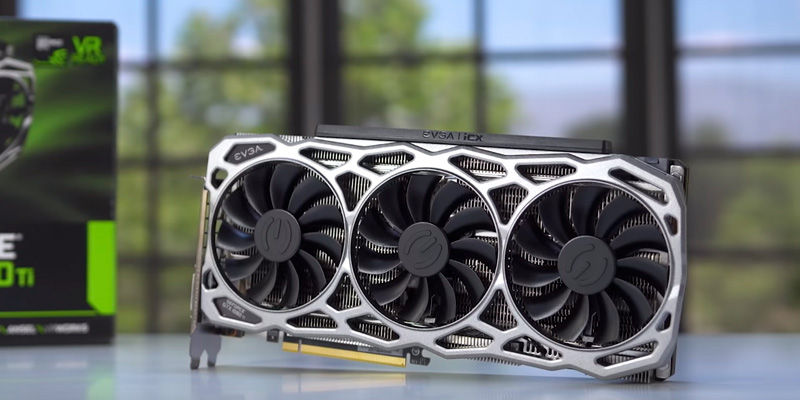
The Latest in Graphics Tech
This top-end graphics card is not lacking for any features. Even the smallest details of this card scream high quality along with top-of-the-line performance. All of the computational horsepower that this card has requires massive cooling, which is done exceptionally well here. The card features the possibility of asynchronous fan control of each of its three fans, which allows you to set the maximum speed of rotation individually for each. The EVGA iCX Technology in combination with 9 temperature sensors will help to closely monitor the state of the card during overclocking, ensuring that your card always stays below the maximum heat threshold even while overclocked.
Along with the amazing cooling system, this card includes a slew of other features. Among these are support for NVIDIA's SLI HB bridge, which lets you connect two cards together, effectively doubling your graphics performance. Also included is the NVIDIA Gamestream technology, which allows you to stream the gameplay from your PC to a portable device, such as the NVIDIA Shield console, letting you view and even play PC games while away from the computer. With these and a host of other features, it's easy to see why this graphics card is top-of-the-line: it simply can't be beaten.
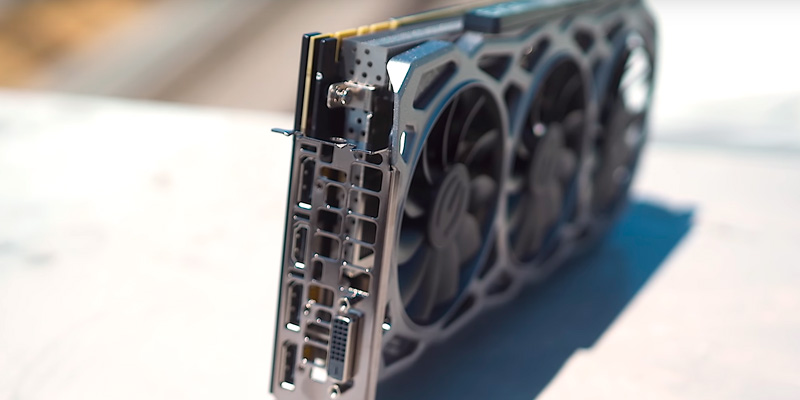
Additional Info
| Last updated price | £978.00 |
| Stock | In stock |
| ASIN | B071Y78QG7 |
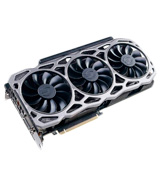
Zotac GeForce GTX 1070 Mini
Powerful Compact Card
Although a lot of gamers like having a monster tower case that is fitted with all of the bells and whistles imaginable, there is a subset of gamers who value elegance and compactness over having a blinged-out gaming rig. Many of these like having smaller form factor cases that are easy to stow away in a tight place, which comes in handy when desk and / or floor space is at a premium. Unfortunately, there are few high-end video card options available for such small form factor cases, especially those with a mini-ITX build, as most high-end cards have cooling systems and components that often make this impossible.
The Zotac GeForce GTX 1070 8 GB Mini Graphics Card is probably the best and most powerful option for those who have a mini-ITX build case. This graphics card, while not as powerful as the flagship GeForce GTX 1080 models, comes pretty close in its overall power, yet has a compact, well thought-out design that is perfect for smaller form factor cases. This video card comes equipped with 8 GB of 256-bit GDDR5 video RAM, and a GPU with a boost clock frequency of up to 1708 MHz, making this an extremely powerful video card despite its small, compact dimensions. In fact, on seeing the card, most gamers will be incredulous that it is capable of its benchmarked performance.
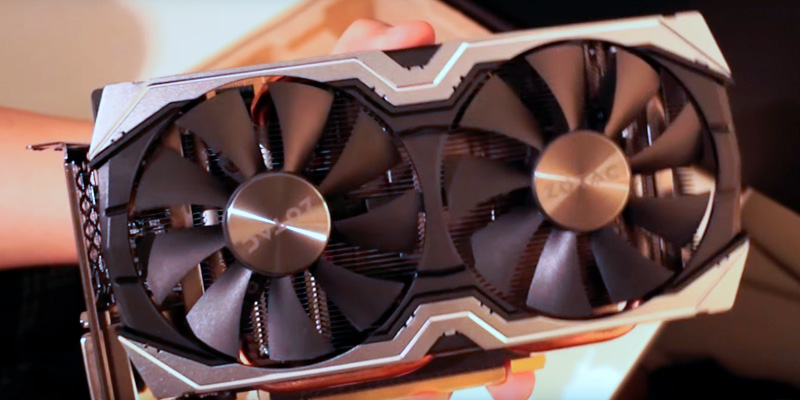
Superb Design and Performance
The compactness of this card is quite amazing for what it is. The card contains a dual fan cooling system that lets the GPU run at overclocked frequencies while still keeping the card quite cool. The total length of the card is just 8 inches, meaning that it is quite a bit shorter than most other cards in its same class. Despite the small dimensions, the cooling system is still large enough to require the card to take up two PCI-e slots in its width, so make sure that you have the proper room to spare in the case.
This card features blazing fast graphics performance that is sure to impress even the most jaded PC gamer. Most games should be able to run at the highest possible settings while still maintaining a smooth framerate, which is important for many games that rely on reflexes and instinct for split-second actions. The fans of the card do run a bit loudly, but the trade-off to this is that they keep the card extremely cool, even when it is being driven to its limits. Those who have had overheating problems in the past with other video cards will most likely find this to be a great relief to them. Overall, this nearly top-end video card is the perfect compliment to those who need high-end performance from a smaller video card.
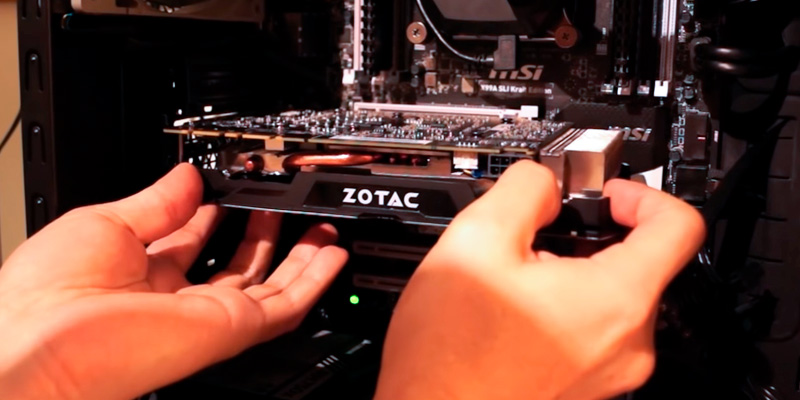
Additional Info
| Last updated price | $0.00 |
| Stock | May be out of stock |
| ASIN | B01LLAJ8PU |
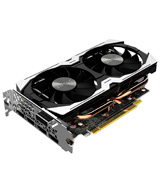
Sapphire Radeon Nitro+ RX 580 4GD5 (11265-31-20G)
High End AMD Radeon Card
NVIDIA has lately been the company that has released the most powerful graphics cards available, with their competition only being with themselves as far as the fastest available graphics card is concerned. However, there are a number of gamers who actually prefer the AMD Radeon series of cards, as they often provide a better price to performance ratio in comparison to those from NVIDIA. Despite wanting a lower price, though, these gamers still demand high performance from their video cards, which is what the Radeon series delivers.
The Sapphire Radeon Nitro+ RX 580 4GD5 Graphics Card is a top-of-the-line card featuring AMD's Radeon graphics, which delivers performance nearly on par with top-of-the-line NVIDIA cards but at a much lower price. This card features 4 GB of DDR5 video memory, giving you plenty of video RAM for textures, and also has a clockrate of 1340 MHz, giving it plenty of graphics processing power. The processing power is so good, in fact, that most gamers are amazed that it can deliver the performance it does at its price point, which is well below the high-end cards from competitors. Games will run at max settings with perfectly fluid visuals, giving any gaming computer the graphical horsepower it needs for even the most demanding games.
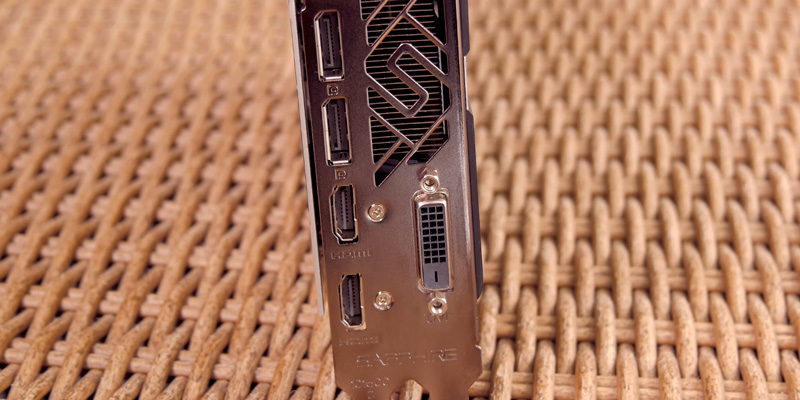
Unique Cooling System
The high performance of this card is definitely something that will get most gamers' attention, but there's something else that is almost equally as good. The cooling system on this card is quite unique and also user-friendly. The fans on this card utilise the unique Quickconnect system, which has them attached to the board with just one screw, so they can be easily removed from the card for quick and effective cleaning of dust. This feature is something that is greatly appreciated by any gamer, but especially from ones who build and service their own computers.
The two ball bearing cooling technology keeps the card quite cool even while operating under heavy loads, and also allows for a bit of overclocking should you want to get a little more graphical horsepower from the card. The power draw of this card is also lower than that of most high-end cards, utilising less than 235 watts of power, which means you shouldn't need to replace your computer's power supply just for installing this card. Along with the fuse protection that helps keep the card from being overloaded, this graphics card provides high-end gaming performance at price point that won't make most gamers fall into bankruptcy.
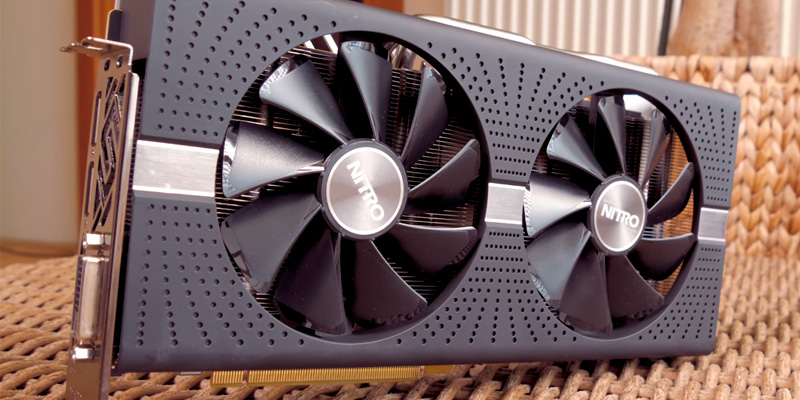
Additional Info
| Last updated price | $0.00 |
| Stock | May be out of stock |
| ASIN | B0797XLR9Z |
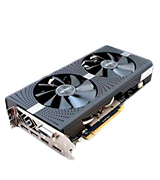
Gigabyte GeForce GTX 1060 (GV-N1060WF2OC-6GD 2.0)
Lower Cost NVIDIA Card
As most gamers are already aware, the highest-end video cards tend to be quite expensive, with many of them costing more than the rest of the components of a good gaming computer combined. This is especially true of the high-end NVIDIA cards like the GeFore GTX 1080, which is quite an expensive card. Of course, not every gamer can afford the high-end cards, which leaves a bit of a conundrum. Some can opt for an AMD Radeon card, but many gamers are diehard NVIDIA fans and swear by their performance.
The Gigabyte GTX 1060 WF 6GB Graphics Card is a high-performance video card that is much more reasonably priced than the flagship model. This card features 6 GB of GDDR5 graphics RAM along with a base clockspeed of 1582 MHz, and up to 1797 MHz when overclocked. Speaking of overclocking, this card comes with the XTREME Engine utility that gives you the ability to safely overclock your graphics card without worrying about burning it out. This utility, along with the overall design of the card, shows an amazing attention to detail that is often missing from most other graphics cards. Within the utility, you have the ability to super overclock your card with just a single click, making overclocking as easy as it can possibly get.
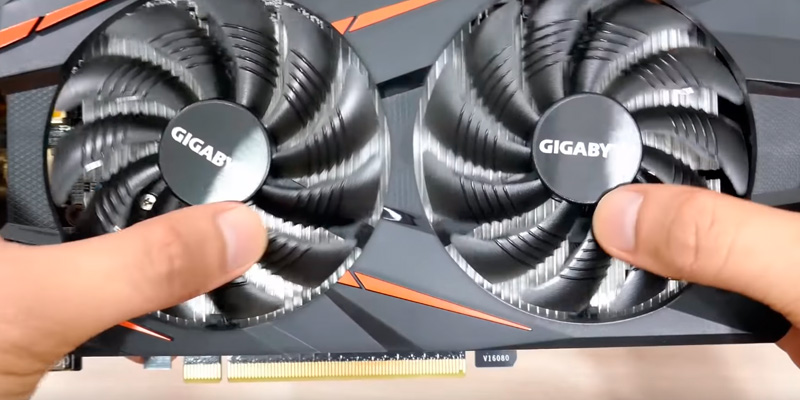
Highly Durable
The overclocking abilities of this card are actually a testament to its overall durability. One example of its high durability is with its WINDFORCE 2X cooling system. The unique composite design of the heat pipes in combination with its close fit to the radiator guarantees even faster heat dissipation, up to 29% higher compared to systems where the tubes are not fully flush with the GPU. The high heat dissipation, in turn, significantly contributes to its durabitliy, as high heat can often cause damage to a card's components over time. The card also features dual high powered fans that are quite effective at blowing the heat away from the card. The downside to them, however, is that they are rather loud when running at full throttle, but this is a small trade-off for having a card that is so thoroughly cooled.
Another nice feature of this card include the protective backplate, which helps protect the solder points of most of the card's components, and it also has the added side effect of giving the card an extremely clean, even look, which is important for those who have see-through cases and like admiring the high-end components of their computer. For those who want the high performance that NVIDIA cards offer but can't afford the exorbitant prices of the highest-end cards, this model is a great buy.
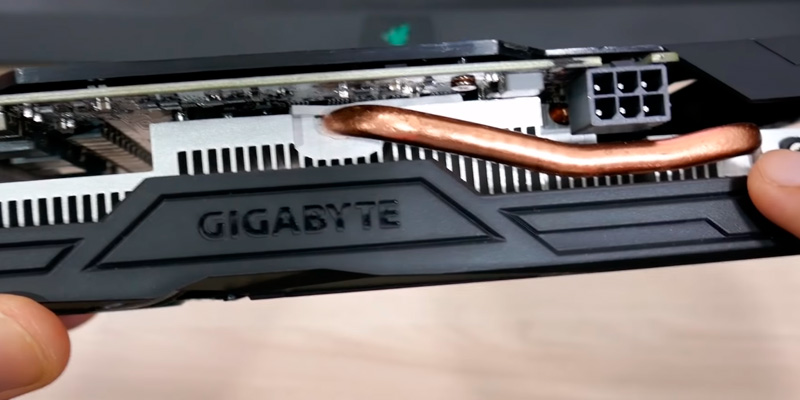
Additional Info
| Last updated price | $0.00 |
| Stock | May be out of stock |
| ASIN | B01JNUO6BG |
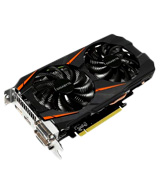
MSI Radeon RX 580 ARMOR 8G OC
High Performance, Low Price
As we have mentioned before, the biggest advantage that AMD's Radeon GPUs offer is their price to performance ratio. Although their top-end cards are not as powerful as the ones from NVIDIA, they still offer pretty close performance at a fraction of the price. This has made them an attractive option for many gamers who simply can't afford the extremely high priced video cards from NVIDIA for their gaming systems, and thus find the Radeon series a very attractive option.
The MSI Radeon RX 580 ARMOR 8G OC Graphics Card is a high performing model that is based on the AMD Radeon architecture. This blazing fast video card offers 8 GB of GDDR5 256-Bit Memory, giving you high performance video memory that helps your games run smoothly, even at the highest settings. The base clock rate of 1366 MHz is a bit lower than that of its contemporary models, but thanks to the included MSI Afterburner overclocking utility, you can crank up the clock rate to get the most performance out of this card. One negative to note with it is that the overclocking utility is not very user-friendly, causing headaches for a lot of people, but once you do manage to get it overclocked, you should be more than pleased with its performance.
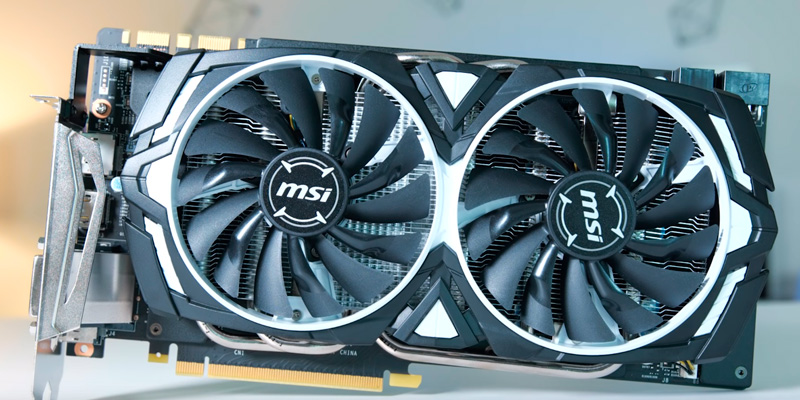
Silent Running
One major drawback to many higher-end video cards is that they not only tend to be quite bulky and expensive, but that they also tend to operate very loudly, thanks to the inclusion of multiple high-speed fans on the cards. This, in combination with a gaming computer's cooling system, often making the gaming experience a rather noisy one. Thankfully, though, the engineers at MSI have really done gamers a service by making a video card that runs very quietly.
This card includes twin TORX fans, which are equipped with dispersion vanes that are bent at a large angle, which significantly accelerates the air flow directed to the radiators. The Zero Frozr technology allows the fans to run at the minimum speed possible, and even completely stops their work at low load, contributing to the overall quiet operation of this video card. Those who have found other high-end cards to be distractedly noisy will be sure to love this feature. Outside of how quiet it runs, the cooling system is still more than good enough at keeping the card quite cool, even when overclocked. The high performance, low price, and quiet operation of this gaming graphics card all help make this one of the best bargains on the market.
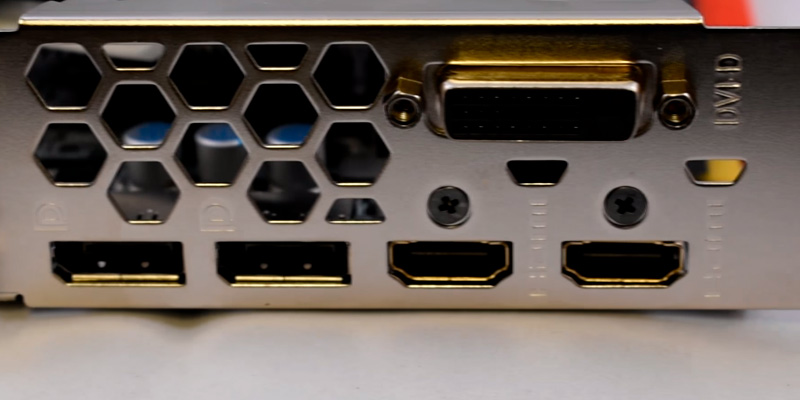
Additional Info
| Last updated price | £329.00 |
| Stock | In stock |
| ASIN | B071Y7XJXN |
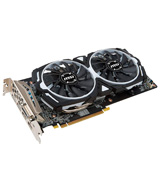
What Is a Graphics Card?
There is hardly a modern high-performance PC that has no powerful discrete graphics card. Discrete graphics cards, also known as external graphics cards, are a separate printed circuit board (which is installed in a dedicated slot on the PC motherboard) with an installed graphics processing unit (GPU), memory chips, individual electric power and cooling systems. Video graphics cards perform the task of processing and outputting the video data to the connected displays. In other words, these components are in charge of rendering the image on a display.
Today the consumer and professional market of PC graphics cards is represented mainly by the products of the two major companies - NVIDIA and AMD (formerly ATI). These companies are developing the graphics card architectures, chipsets, and reference boards (produced at big third-party factories), based on which many other vendors, the most famous of which are Asus, Gigabyte, MSI, Zotac, and others, manufacture their individual products.
If your goal is to assemble a powerful modern desktop PC, we also recommend that you consider such important components as CPU processors and motherboards.
What Features to Compare
Performance
The first thing you need to pay attention to when choosing a discrete graphics card is its performance. PC graphics card performance is primarily influenced by the type of GPU and its clock frequency. The GPU processes the data required for rendering the image on a display, offloading most of these functions from the CPU. The GPU is the most important element of a graphics card for a PC, thus, the more advanced its architecture and the higher the GPU clock frequency is, the better the graphics card performance.
The next important feature that characterises the performance of the graphics card is the amount of included graphics memory. The video memory has four main parameters: capacity (GB), type, operating frequency (MHz), and bus width (bit). The larger the capacity of a PC graphics card is (2 GB and more is recommended), the more data (textures, polygons, etc.) the GPU can store (and access it quickly). The cards are equipped with video memory of several types, which run on different frequencies and, therefore, have different data transfer rates. Modern graphics cards for PCs use mainly the GDDR5 (GDDR3 for older models) memory type. The entry-level graphics cards for the money have a lower threshold of 1600 MHz (old GDDR3 memory) memory frequency while mid-tier models operate at clock frequencies starting from 3000 MHz (of GDDR5) and 5000 MHz for the high-end graphics cards. The video card memory performance is also affected by the memory bus width (as a rule, the larger the bus width the faster the memory). The VRAM bus width of modern graphics cards lies in the range from 64 to 4096 bits.
Features
The second crucial parameter to keep in mind when choosing the best graphics card is its features. Consumer-wise, one of the most important graphics card features is its interface (socket). Modern graphics cards use the PCI Express interface (PCI-E) for motherboard connection (the indication of which usually is followed by the specification of the number of data exchange lines: x8 or x16 - 8 and 16 lines, respectively).
The second feature a consumer should consider is the type and number of video outputs for connecting the imaging devices (displays, panels) to a graphics card. A cutting-edge modern graphics card is equipped with the following video outputs:
- D-Sub (VGA) - transfers an analog video signal (an outdated interface);
- DVI - transfers a digital video signal (maximum resolution: 2560x1600 @ 60 Hz);
- HDMI - transfers digital video and audio signals (maximum resolution: 4096x2160 @ 60 Hz);
- Mini Display Port - transfers a digital video signal (maximum resolution: 4096x2160 @ 60 Hz).
Modern graphics cards support the video signal output at the maximum resolution of 4096 x 2160 pixels and are capable of working with 4 monitors at a time.
When selecting a graphics card for your PC, you should take the support of DirectX and Open GL APIs into account. The more recent the version of these APIs is supported by a video card, the more up-to-date visualization technologies the card can use and the more photorealistic images in games it will create. If you use a graphics card with DirectX 11 support only, you will miss out on the performance of the technological advances provided by the DirectX 12 API. The support of the SLI (NVidia) and CrossFire (AMD) technologies is also worth mentioning as it allows you to install 2 or more video cards on your motherboard, thus significantly boosting the video performance.
Power Consumption and Cooling
The last item on our list of important parameters for the buyers of graphics cards for PCs is the power consumption and cooling. A graphics card is a PC component that has the highest power consumption rate (when measured at the maximum load) of all the other PC internals. Therefore, if the power supply unit (PSU) does not provide the required power, the video card simply will not operate. Video card vendors usually specify the minimum capacity of the PSU required for the normal operation of a video card (however, one should choose a PSU capacity with a power margin of 50 or more Watts). Since the transfer of electric power from the motherboard to a graphics card through the PCI-E interface is usually limited to 75 Watts (due to PCI-E standard specifications), while modern graphics cards for PCs have a higher power consumption, they are equipped with additional power connectors. The availability of 1 or 2 such 8-pin or 6-pin power connectors on a graphics card also needs to be considered. Due to the high power consumption, graphics cards have a high power dissipation. Therefore, to ensure good heat removal and protection from overheating for a graphics card, we should choose the models equipped with an effective cooling system (a large radiator with complex geometry, powerful fan, several fans, liquid cooling, etc.).
AMD vs. NVIDIA - Which Cards Are Better?
One of the biggest debates between competing technology platforms over the last decade has been about the best video cards. The two main GPU manufacturers, AMD (formerly ATI) and NVIDIA, have been the dominant forces in the video card industry for almost the last 20 years, and both companies are still going strong today. Both companies also have their own legions of diehard fans, those who swear their eternal loyalty to their products, and this has caused many an argument over the years about which brand is better.
Just having a schoolyard argument about the fastest video card isn't enough to persuade a buyer to go with one brand or the other, though. There are quite a few different factors that determine which brand has the best graphics card for any particular gaming system. Taking a look at some of these factors should help you determine which brand of video card will be the best one for you.
Performance
First things first - many hardcore gamers, especially those who have a large budget set towards their gaming computer, are most interested in which graphics cards are the fastest available. For a while now, there simply hasn't been any debate about this. NVIDIA has been the clear performance leader, with their high-end flagship video cards dominating the performance charts. The current top video card, the GeForce GTX 1080, which comes in several models based on the manufacturer of the card, has consistently dominated the top spots for a while, and there doesn't appear to be any reason to see that change until NVIDIA releases a faster GPU.
Price
Having the fastest video card available is great for those who has the budget to afford one, but many gamers simply can't afford the extremely high priced video cards. This is where price comes into consideration. Many gamers are often looking for the best price to performance ratio, and here is where AMD has taken the top spot for a long time. Their video cards simply can't match NVIDIA's high-end models, but they certainly compete where price is concerned, most often giving gamers the best bang for their buck. If you're looking for something in the midrange that can run your games smoothly but isn't excessively expensive, AMD cards are your best bet.
Drivers
Again, this is one area where there is a clear winner, and this one would be NVIDIA, who has long had the reputation for having the most optimized video card drivers on the market. AMD, on the other hand, inherited the poor reputation of ATI's drivers from years ago. Although AMD has greatly improved the quality their graphics card drivers, NVIDIA is still by far the clear leader in this area.
Extra Features
Graphics cards, which traditionally have been primarily focused on creating the most detailed visuals possible, have come to do a lot more in recent years. Both NVIDIA and AMD have added a lot of features to their GPUs that help increase the overall performance of games, such as NVIDIA's PhysX technology that provides hardware acceleration for physics in games. Both have also added features to turbocharge gaming performance such as technologies for providing high refresh rates for supported monitors, as well as the ability to connect multiple graphics cards together to increase graphics performance.
Conclusion
Which GPU technology is better for you will come down to your needs. If you want the absolute fastest video card available, and you have the budget for it, then NVIDIA is the obvious choice. For those on a budget, AMD is the clear winner. However, no matter which brand you choose, you should have a video card that will serve you well for years to come.
Sources:
1. Julian Vernon How to Buy a Graphics Card—Six Things You Must Know About GPUs, PC Gamer. June 03, 2014.
2. How to Choose a Graphics Card, wikiHow.
Popular Comparisons
































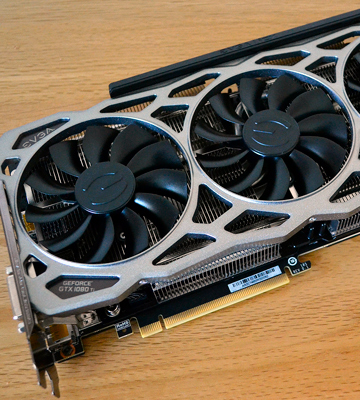
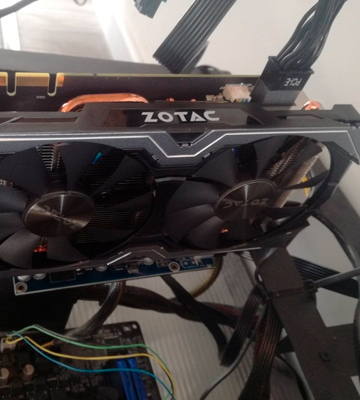
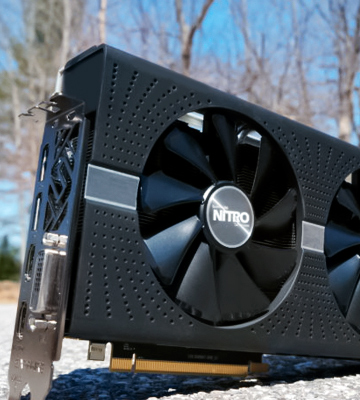
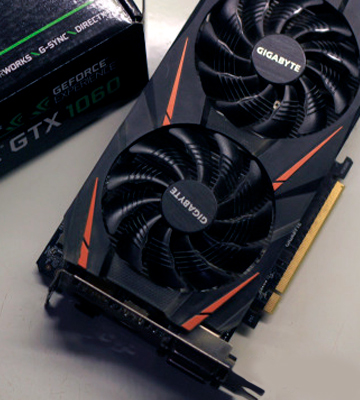
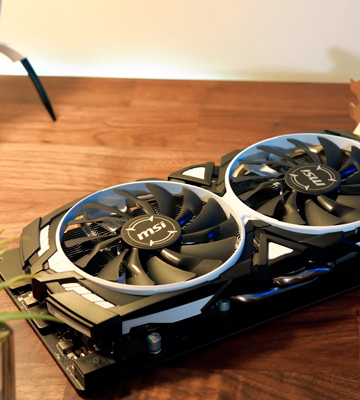
Your comment was successfully sent
Error! Please try again later